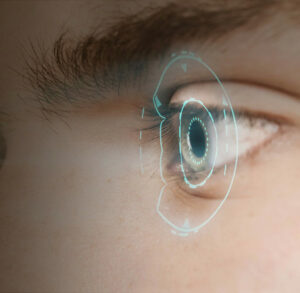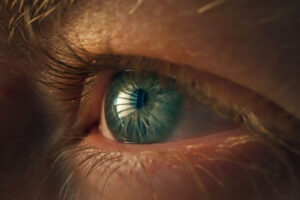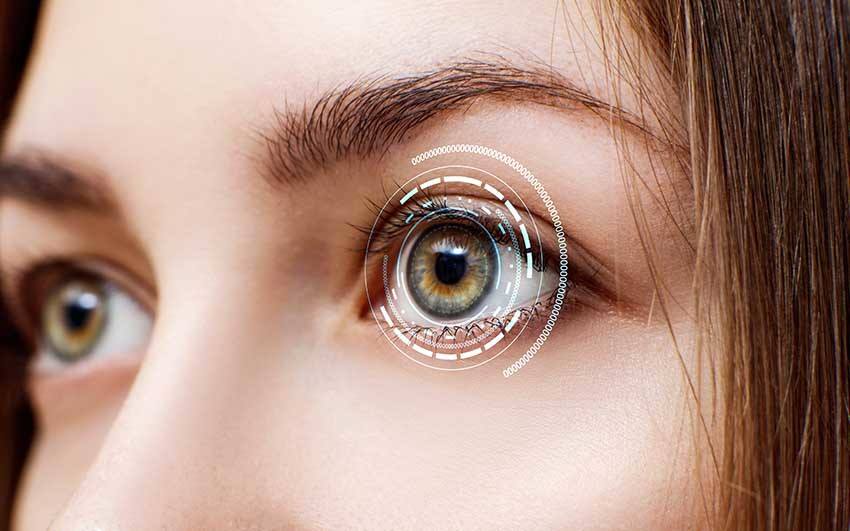Do you wear glasses or contacts? If so, you know that it can be a pain having to deal with them every day. Glasses can be heavy and uncomfortable, and contacts can be a hassle to put in and take out. Plus, they can get expensive over time. If you’re tired of wearing glasses or contacts, topography-guided LASIK could be the solution for you! In this blog post, we will discuss what topography-guided LASIK is and how it works. We will also talk about the benefits of this procedure and who is a good candidate for it.
Contents
What Is Topography-Guided LASIK?

Topography-Guided LASIK is a revolutionary, advanced laser eye surgery that uses computer technology to map the unique corneal shape of each patient. The technology allows for more precise and personalized treatment, giving patients clearer vision with fewer side effects than traditional LASIK procedures.
Topography-guided LASIK has several advantages over standard LASIK procedures. It takes into account the irregularities in the curvature of your cornea which can cause distorted vision and other visual disturbances. By creating a more detailed map of your eye anatomy, Topography-Guided LASIK can customize your treatment plan to get you the best possible results. With this procedure, surgeons can make smaller corrections than ever before while still achieving excellent visual results.
There are two types of Topography-Guided LASIK available: Wavefront Optimized and Wavefront Guided. Wavefront Optimized LASIK uses advanced technology to identify any areas of the cornea that are not perfectly symmetrical so they can be corrected more precisely. The Wavefront Guided technique takes this process one step further, using sophisticated software to map even the smallest irregularities in your eye shape.
Traditional LASIK v/s Topography-Guided LASIK
The traditional LASIK procedure is a well-established and popular method for correcting vision, but it isn’t necessarily the best choice for everyone. Instead, Topography-Guided LASIK may be the better option. This advanced laser eye surgery technology uses high-precision 3D mapping of your eyes to create an even more accurate treatment plan than conventional methods.
Another point of difference is that, unlike traditional LASIK, the eye surgery specialists who use Topography-Guided LASIK can correct for more complex refractive errors and corneal irregularities. For example, it can be used to treat astigmatism, higher-order aberrations (HOAs), and even conditions like keratoconus that cannot be corrected with traditional methods.
Sometimes, the results of a traditional LASIK procedure can be unpredictable, but with Topography-Guided LASIK, you can have increased confidence in the outcome. That’s because of its superior accuracy and precision, which allows for better control over the treatment plan.
The risks associated with Topography-Guided LASIK are minimal compared to those associated with other laser procedures. The safety profile is excellent and complications are rare, so if you’re considering having laser eye surgery, this could be the ideal technology for you.
At the end of the day, it all comes down to individual needs and preferences when it comes to choosing a laser eye surgery technology. Whichever one you choose will depend on your unique situation.
Who Is A Candidate of Topography-Guided LASIK?
The best candidates for topography-guided LASIK are those with specific vision conditions, such as :
Nearsightedness
One of the most common refractive errors, with nearsightedness (also known as myopia) sufferers, have difficulty seeing distant objects. This is due to light focusing in front of the retina instead of directly on its surface.
Also called hyperopia, farsightedness causes problems with close-up vision. This is caused by light focusing behind the retina instead of directly on its surface.
Astigmatism
A vision condition where an irregularly shaped cornea causes blurred vision at any distance.
Also known as age-related farsightedness, presbyopia is an age-related decrease in near vision due to the hardening of the eye’s lens and decreased elasticity of the muscles around your eyes.
Candidates for topography-guided LASIK must also be over 18 years old, have had stable vision for a year or more, have no existing eye diseases such as glaucoma or cataracts, and generally have good overall health.
Advantages of Topography-Guided LASIK

Some of the benefits of topography-guided LASIK include:
1. Improved Vision Quality
The laser used in topography-guided LASIK can accurately reshape the cornea to improve visual acuity. This makes it possible for patients who are nearsighted, farsighted, or have astigmatism to see clearer and more vivid images.
2. Long-Term Results
Unlike glasses or contact lenses which will eventually need updating, the results of topography-guided LASIK can be expected to last a long time without any additional visits or treatments needed. This means that you won’t have to worry about frequent checkups over time and can enjoy better vision for years after the treatment has been completed.
3. Quick Recovery
Compared to other vision correction procedures, topography-guided LASIK has an extremely short recovery time. Patients are typically able to resume their normal activities within a few days of the procedure and can expect to see the improved vision in as little as 24 hours after the surgery.
4. Reduced Risk of Complications
Using advanced technology and precise measurements, topography-guided LASIK reduces the risk of complications that can be associated with other types of laser eye surgery. This allows patients to feel more secure knowing they are getting a safe and reliable treatment with minimal side effects.
If you’re tired of wearing glasses or contact lenses, topography-guided LASIK could be the ideal solution for you. With its improved vision quality, long-term results, quick recovery time, and reduced risk of complications, this advanced laser eye surgery could help you see the world in a new light.
Complications of Topography-Guided LASIK
The risks associated with Topography-Guided LASIK are similar to other types of laser eye surgery, however, it does carry a few additional risks. As the procedure is more precise and individualized, the risk for complications, such as :
Overcorrection of Vision
One of the main risks associated with Topography-Guided LASIK is the potential for overcorrection of vision, which can result in vision that is too blurry or distorted. This occurs when the surgeon makes an adjustment that is not appropriate for the patient’s eye.
Undercorrections
Another risk of Topography-Guided LASIK is the potential for under-correction, which occurs when the surgeon does not make sufficient adjustments to correct a patient’s vision. This can result in vision that is still blurry or distorted.
Flap Injury
During the procedure, a thin flap of tissue may be cut into the cornea to access underlying layers and reshape them. If the flap is not properly created or handled, it can result in a flap injury that causes vision problems and other complications.
Astigmatism
Another risk of Topography-Guided LASIK is the potential for the patient to develop astigmatism. Astigmatism is an imperfection in the cornea which produces distorted vision. It often occurs when the surgeon does not make sufficient adjustments during surgery, resulting in a patient having uneven refraction which can cause blurred or distorted vision.
Dry Eye
One of the most common risks associated with any type of laser eye surgery is dry eye syndrome, as it disrupts tear production in the eye. Dry eyes can lead to irritation, discomfort, and a feeling of sand or grit in the eyes. It is important to discuss any potential risks with your doctor before surgery, as it can help you understand what to expect and how to best prepare for the procedure.
Eye Infection
Finally, infection is another risk associated with Topography-Guided LASIK. Although infections are rare, they can occur if proper care is not taken during or after surgery. It is important to follow all pre and post-surgery instructions carefully to reduce the risk of infection.
How To Prevent Complications of Topography-Guided LASIK?

Preventing complications of topography-guided LASIK requires careful preoperative evaluation and thoughtful treatment planning for each patient.
Manual pre-operative assessment
Pre-operative assessments are essential for successful LASIK procedures. Before the procedure is performed, your ophthalmologist should assess your eye health and vision to ensure that you are a good candidate for the surgery. Your doctor should also review any risk factors that could increase complications during or after the surgery, such as dry eye syndrome or thin corneas.
Proper post-operative care
After Topography-Guided LASIK is completed, it’s important to follow your ophthalmologist’s instructions on how to properly care for your eyes following the procedure. This includes using lubricating eyedrops and sunglasses when outdoors and avoiding activities like swimming and contact sports that can affect the healing of the cornea.
Regular follow-up visits
It’s also important to attend regular follow-up appointments with your ophthalmologist after the surgery. This will allow your doctor to monitor the progress of your recovery and provide any necessary treatments if complications develop.
Conclusion
Topography-Guided LASIK is a safe and effective procedure for correcting vision impairments. It offers patients the ability to achieve potentially better visual outcomes than conventional LASIK, with the potential for improved night vision and higher satisfaction rates. As with any surgery, there are risks associated with Topography-Guided LASIK, so it is important to speak to your eye doctor about the procedure and make sure it is right for you. With the right precautions and decisions, Topography-Guided LASIK can be a great option for correcting vision impairments and improving quality of life.
Lasik surgery is a safe 10-minute procedure to help you get rid of glasses. MantraCare offers the most advanced LASIK options. If you have any questions on LASIK surgery feel free to reach out to us at +91-9711116605.
